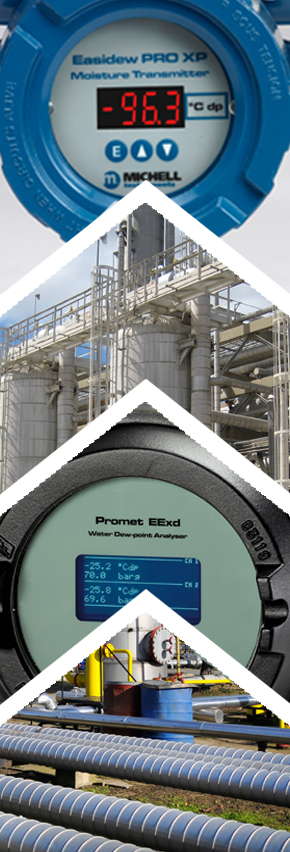|
#1 Most versatile technology
Aluminium oxide moisture sensors were introduced in the 1960s and the technology is going strong today. One of the reasons for its longevity is its versatility, which makes it suitable for many processes.
The measurement range covers both wet as well as very dry conditions. In terms of moisture content the range is from 23,000 ppmV down to less than 10 ppbV. That’s a dynamic measurement range over nine orders of magnitude, with just one sensor.
#2 Dew-point readings at line pressure
Many contractual agreements for natural gas suppliers require actual dew-point measurements at pipeline pressure. Unlike other moisture measurement technologies, aluminium oxide sensors are able to measure dew-point at pressures up to 350 barg. This is more than enough for standard gas pipelines, which operate at pressures between 14 and 100 barg.
The ability to take moisture readings at line pressure is an advantage for many other applications, including compressed air, given that it allows measurements which are representative of the actual sample conditions, without relying calculating values to another pressure.
#3 The technology has been completely refined and improved
Aluminium oxide is considered to be an ‘old’ technology. In part this is true as the earliest AlOx sensors were introduced in the 1960s. But just like the microprocessor (first developed in 1969), aluminium oxide sensor design has been continually refined and developed, and the sensors in production today are far in advance of the original 1960’s designs
The improvements made include the introduction of two-wire transmitters, which are easier to install than the three-wire versions. The availability of new materials and production techniques has led to more robust sensors, which are resistant to sudden changes in pressure.
|
 |